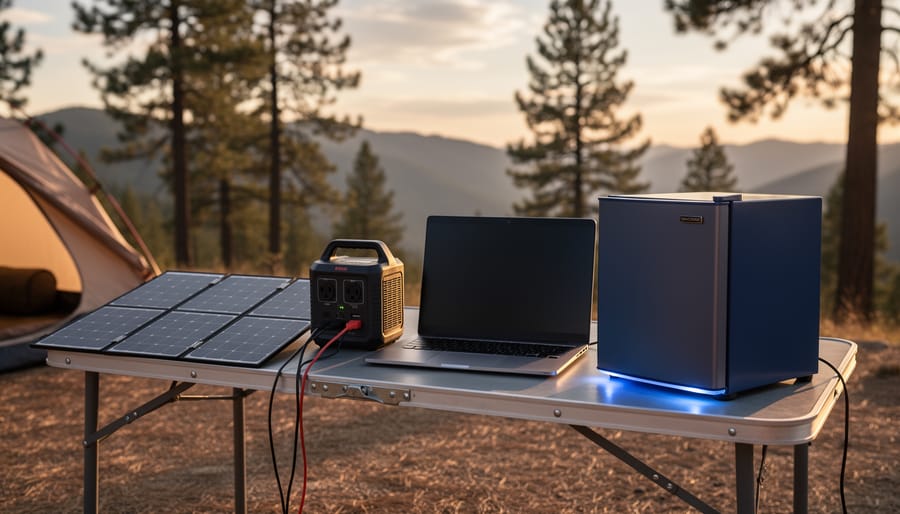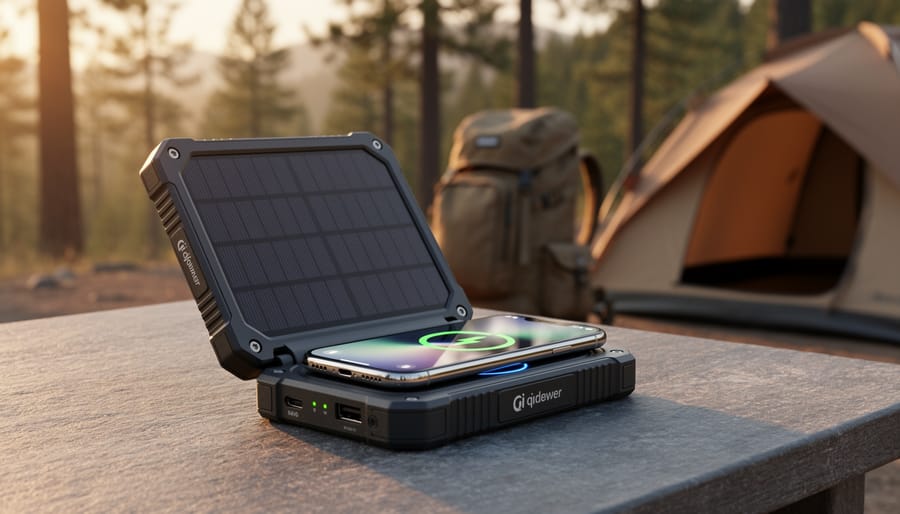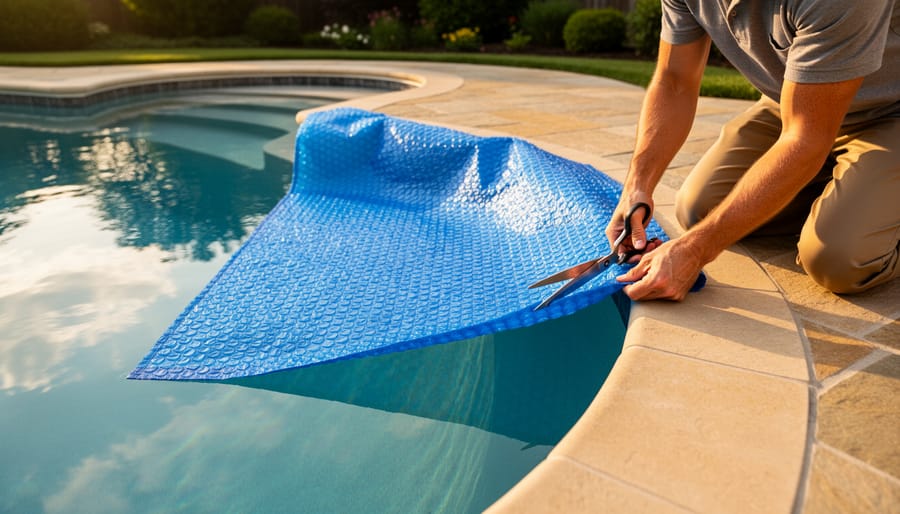Do Solar Lights Attract Bugs?
Updated:

Yes, solar lights can attract bugs, but how much they attract depends on the bulb type and brightness.
In this article, we’ll talk about how different types of solar lights affect bug attraction, the colors that attract or scare away bugs, and other factors that affect bug attraction, as well as what you can do to reduce it.
So, let us get started!
How Different Types of Solar Lights Affect Bug Attraction

Different types of solar lights vary in their ability to attract bugs. To better answer the question “Do solar lights attract bugs?,” let us look at some of the common solar lights and their effect on bugs:
Solar LED Lights
Bug Attraction Level: Low
LED bulbs emit very little ultraviolet light, which strongly attracts insects. And they produce almost no heat, which deters heat-seeking bugs. This makes solar LED lights much less appealing as a light source for bugs.
Dimmer, low-wattage LED solar lights attract even fewer bugs since they aren’t overly bright. Solar LED string lights contain tiny bulbs that have little bug appeal. Overall, solar LEDs are the best for avoiding bug swarms.
Solar CFL Lights
Bug Attraction Level: Medium
Some solar lights use CFL (compact fluorescent lights) because they are energy efficient. But CFL bulbs emit a small UV light, making them slightly more attractive to insects than LEDs.
CFLs also produce more heat than LEDs, which can draw in heat-seeking bugs. So, while solar CFL lights are better than incandescent, they will attract some more bugs than solar LEDs.
Solar Incandescent Lights
Bug Attraction Level: High
Some older solar lights use traditional incandescent light bulbs. These bulbs give off a significant amount of UV light that attracts insects. Incandescent bulbs also get hot, attracting bugs seeking heat sources.
Halogen Solar Lights
Bug Attraction Level: Moderate
Halogen bulbs operate similarly to incandescent bulbs but are more energy efficient. However, halogens still emit UV light and quite a bit of heat, though slightly less than incandescents.
This makes solar halogen lights appealing to bugs attracted to UV light and warmth. They will lure in fewer insects than solar incandescent options but more than solar CFLs or LEDs.
Solar-Powered UV Lights
Bug Attraction Level: Very High
Specialized ultraviolet (UV) lights are sometimes used in solar-powered bug zappers. These UV lights are specifically designed to attract all types of flying insects.
While not typically used in home solar lighting setups, these intense UV solar lights would attract swarms of moths, mosquitos, and other bugs if installed outdoors.
How Different Solar Light Colors Affect Bug Attraction

The color of your solar lights plays a crucial role in attracting or repelling bugs. You can minimize bug attraction by selecting the appropriate color while enjoying your outdoor space.
Now, let’s examine how specific color options perform regarding bug attraction.
Cool Blue Solar Lights
Bug Attraction Level: High
Cool blue solar lights attract many night-flying insects, such as moths, flies, and beetles. The bluish tone closely mimics moonlight, commonly used by nocturnal insects for navigation.
Therefore, using cool blue light will result in a noticeable increase in insect activity in the area they illuminate.
Neutral White Solar Lights
Bug Attraction Level: Moderate
Neutral white solar lights attract a moderate number of bugs, notably moths and flies.
This level of attraction is because the emitted light has characteristics similar to natural daylight. Therefore, you may notice an uptick in flying insects, but not as much as with cool blue lights.
Warm Yellow Solar Lights
Bug Attraction Level: Low
Warm yellow solar lights are among the least attractive to insects. The low bug attraction rate is due to the light’s longer wavelength, which most insects find difficult to detect.
While not entirely bug-proof, warm yellow solar lights significantly reduce the likelihood of an insect swarming around your outdoor spaces.
Amber/Orange Solar Lights
Bug Attraction Level: Very Low
Due to their specific wavelengths, Amber and orange solar lights rarely appear to most insects.
If minimizing bug activity is your primary concern, these colors are nearly ideal. When using amber or orange solar lights, you’ll experience minimal interference from flying insects.
Red Solar Lights
Bug Attraction Level: Virtually None
Red light is the most effective at repelling insects because it falls within the light spectrum that bugs simply do not detect. The red wavelength is invisible to most insects, including common nuisances like mosquitos and flies.
Therefore, red lights are ideal if you aim for practically zero insect activity in your outdoor areas.
Factors That Impact Bug Attraction
Beyond the type and color of solar lights, some other factors influence how attractive they are to insects:
Heat Output
As mentioned, heat-seeking bugs, like some moths and mosquitos, are attracted to warm light sources.
Solar LED lights emit very little heat, avoiding these pests. Using CFL or incandescent solar lights will draw in more heat-seeking insects.
Light Position
Solar lights close to vegetation, bodies of water, or flowering plants will attract more bugs since these are natural insect habitats.
Solar spotlights aimed away from seating areas will also keep bugs away from humans. Proper light placement can limit bugs around solar lighting.
Time of Year
Bug attraction fluctuates through the seasons. When bug populations spike, solar lights attract more insects in warmer months. Reducing the number of solar lights used in summer can deter some bugs.
Brightness Of Solar Lights
Brighter solar lights naturally attract more bugs since they are more visible.
Lower-wattage, dimmer solar lights deter more insects even if using CFL or incandescent bulbs.
Dirt & Debris
Allowing dirt and dead bug carcasses to accumulate around solar lights provides an environment that attracts more live insects.
Regular cleaning around solar lights helps reduce bug attraction.
Proximity to Bug Zappers

Solar-powered bug zappers installed near solar lighting attract bugs to the zapper and away from the lights. The zapper then eliminates the concentrated bugs.
Bugs Most Attracted to Solar Lights
While solar lights do not strongly attract most insects, some bug varieties are more prone to being drawn to their glow:
- Moths – These are attracted to bright lights and circle them. But most moths do not cause damage or bite humans.
- Mosquitos – Mosquitos are attracted to heat and carbon dioxide, so solar LED lights deter them. But they may still be seen around CFL solar lights.
- Beetles – Like June bugs and fireflies, many beetles fly near solar lights, especially bright white ones. But beetles are generally harmless.
- Flies – House flies, horse flies, and gnats cluster around solar lights, particularly those emitting some UV light. They can be bothersome, but don’t bite.
- Cicadas – These large flying insects flock to bright solar lights on summer nights, drawn in by the glow. They make loud noises but don’t harm humans.
Note that bugs can bring in animals that eat them, like bats and spiders. However, these animals are attracted to the bugs, not the solar lights, so the light is not drawing them.
Tips for Deterring Bugs from Solar Lights
If you want to use solar lighting but deter bugs, there are some effective tips:
- Opt for Solar LEDs: These types of lights produce less heat and are thus less appealing to heat-sensitive bugs.
- Warm Glow: Opt for solar lights with warmer color temperatures like amber or soft white, instead of bright white or blue lights, which are more appealing to bugs.
- Strategic Positioning: Aim solar spotlights away from places where people congregate to reduce the likelihood of bugs buzzing around humans.
- Distance from Habitats: Position your solar lights as far away as possible from areas where bugs are naturally found, such as plant beds or water features.
- Dimmer is Better: Use lights with lower or adjustable brightness settings to minimize bug attraction. This is effective even for incandescent or CFL bulbs.
- Regular Cleaning: Periodic maintenance to remove dirt, debris, and insect carcasses will make the area less inviting for new bugs.
- Integrated Solutions: Use a solar-powered bug zapper as part of your outdoor lighting setup to attract and eliminate bugs.
- Seasonal Adjustments: During the bug-heavy months, reduce the number of active solar outdoor lights or opt for bug-repelling features to mitigate the attraction.










